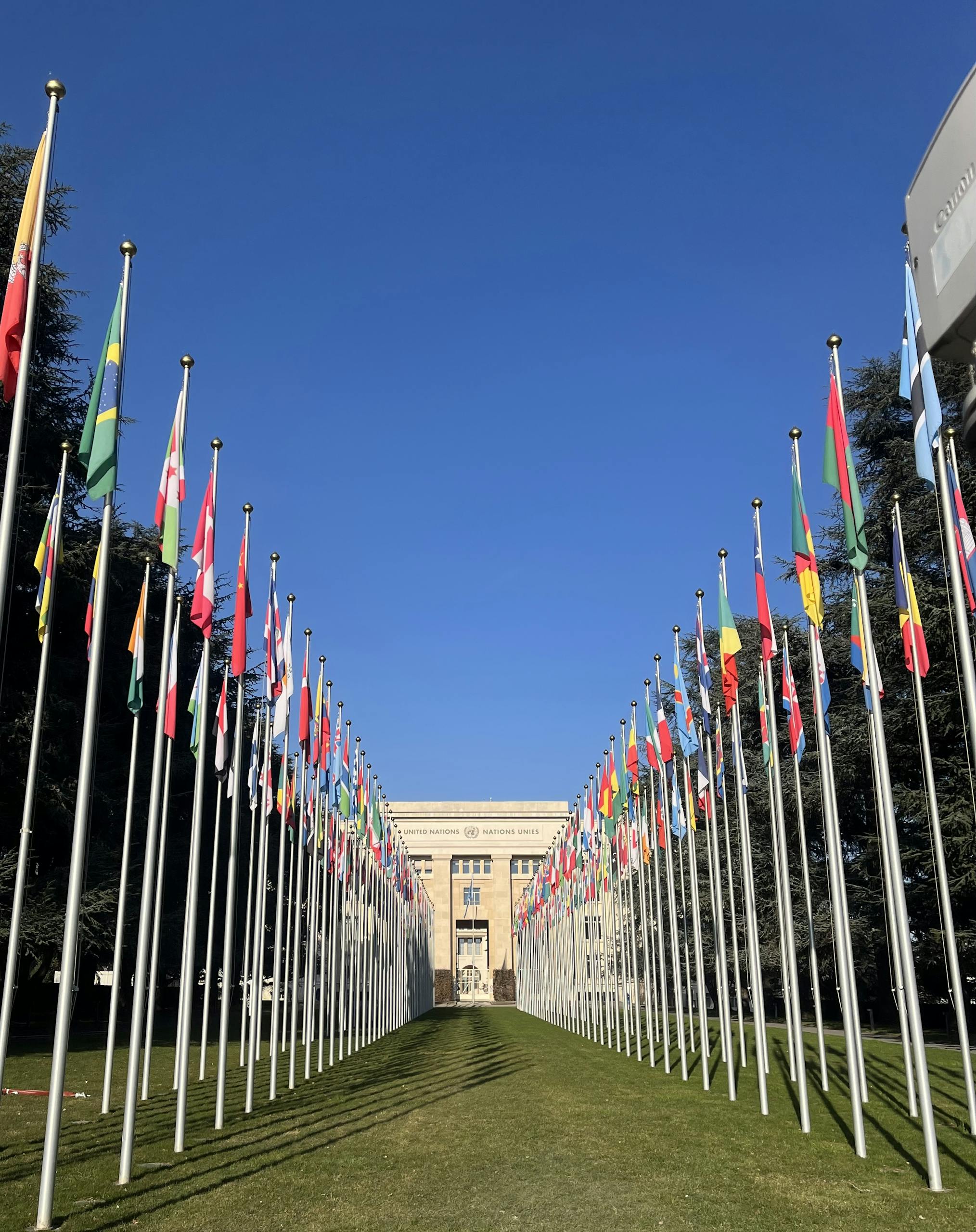Diplomatic representation takes many forms, from the highly visible embassy that proudly displays its national flag, to hidden or discreet facilities that operate without outward symbols. Both types serve important roles in international relations, yet they differ in visibility, purpose, and architectural expression.
Buildings with national flags are designed to announce sovereignty and provide official, public-facing functions such as consular services. Hidden diplomatic facilities, on the other hand, emphasize confidentiality, subtlety, and controlled access. Their very invisibility becomes a form of protection. Learn more about INJ Architects’ perspective on security and design integration.
Buildings That Display Flags
These are the traditional embassies and consulates that operate under full diplomatic protocol.
Key Features
- National Flag and Emblem: A constant marker of sovereignty and official recognition. See Architecture Style.
- Public Accessibility: Services such as visas, passports, and citizen support are available. Related service approaches.
- Ceremonial Role: Hosts events, receptions, and diplomatic ceremonies. Learn more on INJ Architects Philosophy.
- Security Balance: Visible security personnel at entrances, high fences, controlled gates, but still an inviting exterior. Related to project security strategies.
Hidden Diplomatic Buildings
In contrast, hidden diplomatic facilities operate quietly, without displaying obvious symbols. They may serve as intelligence offices, cultural hubs, or backup facilities.
Key Features
- No Flag, No Plaque: The building looks like a standard office or residence, providing anonymity. See BIM & CAD for design precision.
- Restricted Access: No public consular services; entry limited to authorized personnel. Related to VR & AR simulations for access planning.
- Confidential Functions: May include communication centers, research units, or discreet diplomatic discussions. See Engineering Arbitration for secure operations.
- Enhanced Security in Disguise: Reinforced structures, surveillance, controlled access, and blending into the urban context. Related quality measures.
Table 1: Visible vs. Hidden Diplomatic Buildings
| Feature | Buildings with Flags | Hidden Diplomatic Buildings |
|---|---|---|
| Symbolism | National flag, emblem, official design | No symbols, discreet appearance |
| Accessibility | Public services, visitor-friendly | Restricted, no public access |
| Function | Consular services, ceremonies, representation | Confidential work, secure communication |
| Security Approach | Visible guards, defined boundaries | Hidden systems, anonymity as protection |
Symbolism and Identity
Buildings with flags serve as extensions of national identity abroad. Their design incorporates cultural motifs, traditional architecture, or modern symbols of state power. Hidden buildings, however, rely on absence of identity as their main characteristic, prioritizing confidentiality and protection. Learn more about our approach to subtle architectural strategies.

Architectural Differences
Visible Diplomatic Buildings
- Large entrances and reception halls.
- Prominent use of national symbols and materials.
- Open yet secure landscaping.
Hidden Diplomatic Buildings
- Neutral facades resembling offices or apartments.
- Few or no public-facing spaces.
- Focus on interior functionality and communication security.
Table 2: Architectural Characteristics
| Aspect | Flag-Bearing Buildings | Hidden Diplomatic Buildings |
|---|---|---|
| Exterior Design | Symbolic, cultural motifs, national identity | Neutral, blends into context |
| Entrances | Formal gates, flagpoles, reception halls | Simple doors, no ceremonial design |
| Public Spaces | Consular counters, waiting areas, event halls | Minimal to none |
| Security Features | Guard posts, walls, surveillance | Concealed systems, reinforced interiors |
Security and Strategy
Visible diplomatic buildings rely on international law and physical security, while hidden buildings depend on subtlety and disguise. Security is embedded quietly into design, often unnoticed by the public. For related security considerations, see our guidelines.
Table 3: Security Models
| Security Dimension | Visible with Flags | Hidden Buildings |
|---|---|---|
| Protection Source | International law + visible barriers | Anonymity + hidden systems |
| Security Presence | Guards, checkpoints | Disguised personnel, discreet controls |
| Vulnerability | High-profile, easily identifiable | Low-profile, harder to locate |
| Strategy | Display and defend | Blend and conceal |
Conclusion
The contrast between flag-bearing diplomatic buildings and hidden diplomatic facilities lies in the balance between visibility and invisibility. Visible missions project sovereignty, culture, and official presence, while offering public services. Hidden facilities operate discreetly, prioritizing confidentiality and security over symbolism. Together, they form the visible and invisible architecture of international relations. Learn more about our work and contact us for inquiries.

Summary
Diplomatic representation varies between visible flag-bearing embassies and hidden facilities. Flag-bearing buildings display national symbols, provide public services, host ceremonies, and reflect national identity through design. They combine openness with security using guards, controlled access, and symbolic architecture. Hidden diplomatic buildings focus on discretion, restricted access, and confidential functions. Their security is embedded and subtle, and the architecture prioritizes functionality over symbolism. The two types complement each other in international relations, balancing public representation with confidential operations.

Pingback: Diplomatic Buildings as Cultural Bridges Between Nations
Comments are closed.